- Tags:
- Amanohashidate / Bridgers / Kyoto
Related Article
-
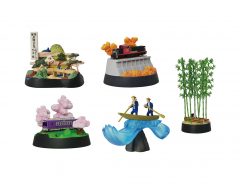
Miniature landscapes capture the quintessence of memorable Arashiyama, Kyoto
-
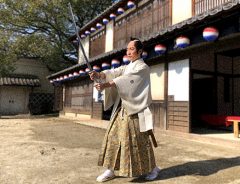
Toei Kyoto Studio Park: Experience The Thrilling World of Japanese Hollywood (Part 2)
-
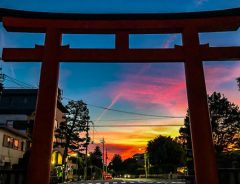
Rainbow Sunset in Japan Brings ‘Your Name’ Scenery into Reality
-
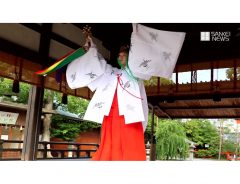
Shrine maiden at Kyoto’s Jōnangū Shrine performs sacred mid-summer kagura dance
-

Sailor Moon Will Keep Your Money Safe In This Gorgeous Wallet Made From Traditional Kyoto Textiles
-
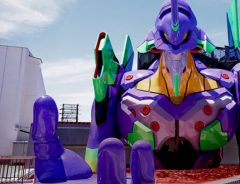
Life-sized Evangelion statue in Kyoto lets you take a synchronization test in the entry plug
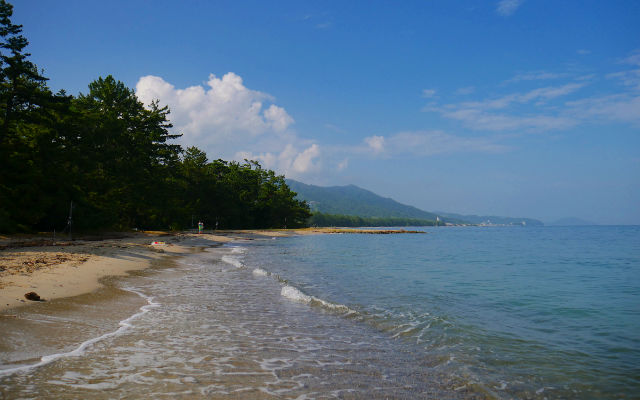


Kyoto. The proud former capital of Japan, internationally famed as the place where you can still see Geisha and Maiko, drink real matcha in a traditional tea house, nibble on classic Japanese sweets like Yatsuhashi and Warabi Mochi, and visit temples painted silver and gold. When people mention Kyoto, that’s the city they normally mean.
Not many people know about the beauty that lies within Kyoto Prefecture beyond the Yamashiro Kyoto basin. Take a look beyond the Kitayama mountain and head further north; suddenly you will be transported to a different world, Kyoto by the sea.
You will find that although the main city of Kyoto feels old, the world you are now standing in feels much more ancient and as though it should belong to another realm. Here, you will find more rice paddies than you can count, ancient fishing villages still in business and the mysterious and beautiful Amanohashidate.
Amanohashidate, now that is a mouthful.
Over 8000 pine trees line the sandbar. Photo credit: Connie Sceaphierde
What is Amanohashidate?
Amanohashidate is a sandbar which spans 3km across the distance of Miyazu Bay in Northern Kyoto Prefecture. The sandbank which measures 20 meters across at its narrowest point has been revered for centuries by all kinds of people for its mysterious beauty. Looking at the embankment from one of the mountains at either end, the land bridge is said to look like a winding pathway between heaven and earth. This mythical observation would explain the meaning behind the name, Amanohashidate, which roughly translates to “bridge to the heavens.” Alongside Matsushima Bay in Sendai, and Miyajima island in Hiroshima, Amanohashidate is one of the views that make up “Japan’s three most scenic views”.
Over 8000 pine trees line the Amanohashidate sandbar, and as such it is considered as one of Japan’s best pine tree sightseeing spots. Scattered amongst the pine trees, visitors to Amanohashidate can stumble upon traditional houses, the odd shop and old Japanese shrines. One notable shrine along the sandbar is the Amanohashidate shrine where it is said that the king of the eight dragons of Japan is enshrined. At the shrine there is a mysterious watering hole, where, despite being surrounded by saltwater on both sides, fresh water runs. It is said that this fresh water is what kept the community that once lived on the sandbank alive in ancient times.
The eastern side of the embankment is fringed with white sandy beaches. During the summer, these beaches are popular amongst beachgoers enjoying picnics, swimming in the sea or admiring the view from a boat ride just off the shore.
A dirt track runs north to south along the Amanohashidate, and can be walked in a matter of 45 minutes. Alternatively, there are plenty of rental bicycle and activity shops at either end of the sandbar. Visitors can cycle the pathway in 15 minutes, return the bike to the other side of the bridge and travel back to where they came from by a special type of speed boat that will take you back across the bay.
A special kind of speed boat will take you back across the bay. Photo credit: Connie Sceaphierde
The Legend of Amanohashidate
Legend tells that the god Izanagi travelled back and forth between heaven and earth to meet with his lover, the goddess Izanami by use of a ladder. The story states that one day, whilst Izanagi was sleeping the ladder fell to the earth and formed the land bridge which we see today at Amanohashidate. The area of Amanohashidate is now known as the place where men and women can be bound to each other for eternity like Izanagi and Izanami.
It is said that when the sandbar is viewed upside down it looks like what could be a bridge between the heavens, and so visitors to the area are often found to be viewing Amanohashidate through their legs. This practice is known as “Matanozoki”.
The surrounding area and how to view the sandbar from above
Both ends of the Amanohashidate sandbar have plenty of cafes, restaurants and shops for exploring. Why not try some Dragon soba (Ryugu soba) or some fresh seafood whilst drinking some famous kyoto green tea or matcha.
In addition to the numerous food and souvenir shops, visitors are welcome to seek out the wisdom and guidance of the gods at Chionji Temple on the southern end of the sandbank, or at Motoise Kono Shrine in the north.
Although it is fun to take a bike ride across Amanohashidate, or to explore the bridge by foot, arguably one of the best ways to enjoy the scenery is by taking in the full length view of the sandbank from a mountain at either end of Amanohashidate.
At the southern side of the sandbar, behind Amanohashidate station, Visitors can enjoy a breathtaking view of Amanohashidate from Amanohashidate View Land. Accessible by a chairlift or by monorail, this is a small theme park with rollercoasters and a ferris wheel amongst other amusements. The view of the sandbank from Amanohashidate View Land is considered to look like a dragon flying up to heaven, and is often regarded to be the best view of the area.
On the opposite, northern end of Amanohashidate, a view said to resemble the kanji for “one” can be seen from Kasamatsu Park. In addition to enjoying the view, from here visitors can also take a shuttle bus from Kasamatsu park to the Nariaiji Temple which sits further up the mountain.
Rental bicycles are available at either end of the sandbar. Photo credit: Connie Sceaphierde
How to get to Amanohashidate
Amanohashidate can be reached by taking the Kyoto Tango Railway line to Amanohashidate station. From the train station, visitors can choose to either immediately head to Amanohashidate View Land by the connected chairlift or monorail, or to leave the station and head to the southern entrance of the sandbar which is about a 5 minute walk.